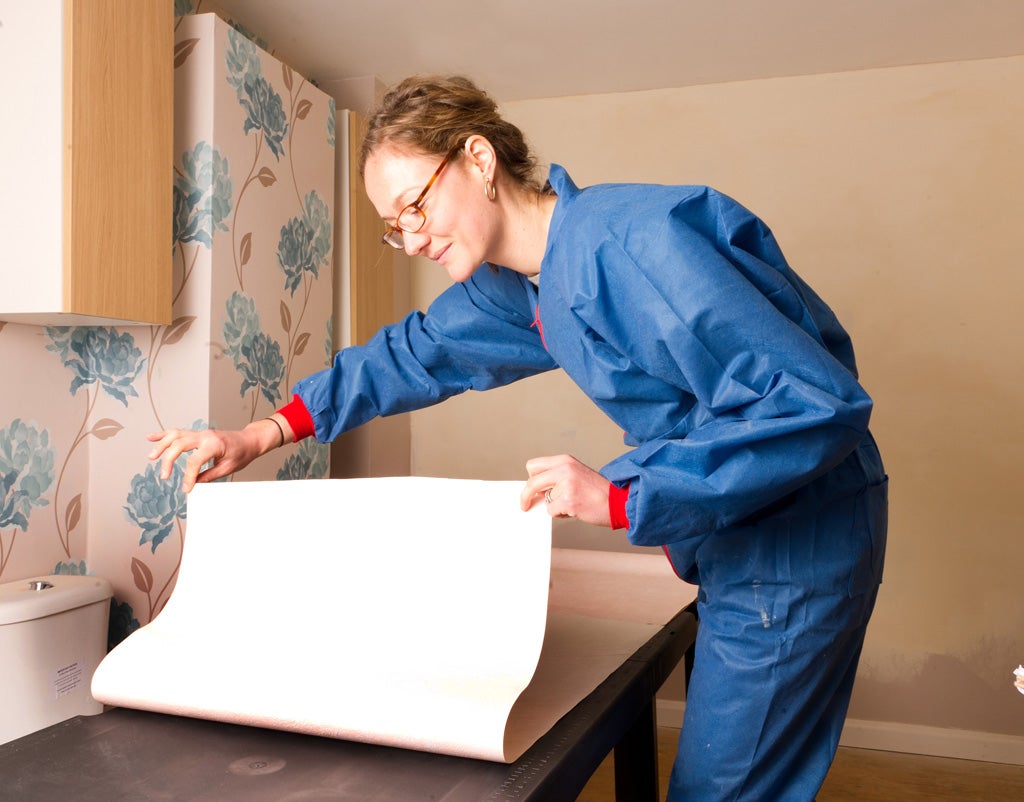Bank Holiday decorating: The Dos and Don'ts
Emily Jenkinson picks up some top tips for DIY-ers at the new decorating course for Homebase staff

Your support helps us to tell the story
From reproductive rights to climate change to Big Tech, The Independent is on the ground when the story is developing. Whether it's investigating the financials of Elon Musk's pro-Trump PAC or producing our latest documentary, 'The A Word', which shines a light on the American women fighting for reproductive rights, we know how important it is to parse out the facts from the messaging.
At such a critical moment in US history, we need reporters on the ground. Your donation allows us to keep sending journalists to speak to both sides of the story.
The Independent is trusted by Americans across the entire political spectrum. And unlike many other quality news outlets, we choose not to lock Americans out of our reporting and analysis with paywalls. We believe quality journalism should be available to everyone, paid for by those who can afford it.
Your support makes all the difference.Painting and decorating is a doddle, right? You just buy some paint, fish out a paintbrush from the 'man drawer' and off you go. This was my approach a few weeks ago when re-painting the door to my outdoor terrace and the results - complete with lumpy bits and gloopy corners - were less than impressive. But I'm not the only one to fall into painting and decorating 'trap'.
According to a recent survey by HSBC, the coming bank holidays will see more than half of UK householders undertake some form of DIY in their homes, with the most popular job of all being re-decorating. Contrary to common sentiment, however, painting and decorating is not as simple as it looks and a little well-placed advice in advance can go a long way towards helping avert DIY disasters.
Homebase - Britain’s go-to store for DIY tools - has, this year, launched a five day City & Guilds course, held at East Berkshire College in Langley, where members of its staff can brush up on decorating skills, including hanging wallpaper, paint preparation and paint application, while gaining inside knowledge of the tools and tricks of the trade, which they can then pass onto customers.
I went along to a condensed version of the day, where practical lecturer of painting and decorating at East Berkshire College, Raymond Brant, put me through my paces, while sharing some key ‘dos and don’ts’ for budding DIY decorators.
DECORATING DOS AND DON'TS
Preparation
Do – work from the bottom to the top when soaking off old wallpaper. This will help avoid water going everywhere.
Do – scrub down the wall at least twice once you’ve removed the wallpaper. It’s important to make sure it’s cleaned properly before putting new wallpaper up or within six months it will start to go mouldy and peel off.
Do – use a well-worn paint brush if possible. You want them to get split ends as it makes for a softer touch, particularly on outside doors.
Do - use warm water to wash painting equipment. Hot water makes the paint go gooey and stick to the bristles.
Painting
Don’t - paint directly out of the paint can. If you’re up a ladder and it gets knocked off, you’ll have 10 litres of emulsion to clear up. Meanwhile, it can transfer debris from the brush back into the pot, leaving lumps in your paintwork. Decant some into a smaller container bucket instead.
Do - paint the edges of the wall first, slowly fanning the brush out sideways to ensure a straight line (this is called ‘cutting in’). You can then fill in the rest using either a paint brush for a small wall or a roller for a larger area.
Don’t - load the paint brush with too much paint. This is a classic mistake of DIY decorating that leaves a lumpy finish. The paint shouldn’t come more than half way down your brush.
Do - paint using the tip of the brush so you don’t leave brush marks. Emulsion pain should be laid on in different directions (not just vertically as most people do it), so the brush marks blend in and don’t catch the light.
Do - allow the correct amount of time (four hours for emulsion and 16 hours for oil) between coats or the solvent in the second coat will smear the first.
Do - kill off any strong colour on walls with a layer of white emulsion before adding another colour.
Wallpapering
Don’t - just pour wallpaper paste straight into the water or it will go lumpy. Make sure the water is moving constantly as you pour the paste very gradually. Be sure to read the manufacturer’s instructions as this varies from product to product.
Do – go for wallpaper paste with a fungicide in it, particularly if hanging wallpapers as this will extend the life of your walls and stop them going mouldy.
Do – leave your wallpaper time to soak after you have pasted it. The length of time varies between manufacturer and manufacturer, so read the instructions.
Do - use a plumb bob to mark an exactly vertical line before hanging your first piece of wallpaper and remember that door frames and windows are often not plum (exactly vertical), especially in old houses. If the first piece is hung straight, the rest should follow.
Do – make sure the batch and pattern numbers are the same to ensure uniformity, and mark the top end of the paper as you cut it to ensure plant patterns grow the right way up your wall….
Emily Jenkinson is interiors writer for the mydeco marketplace, an online shopping experience where you can search hundreds of home furnishings and accessories all in one place.
Join our commenting forum
Join thought-provoking conversations, follow other Independent readers and see their replies
Comments